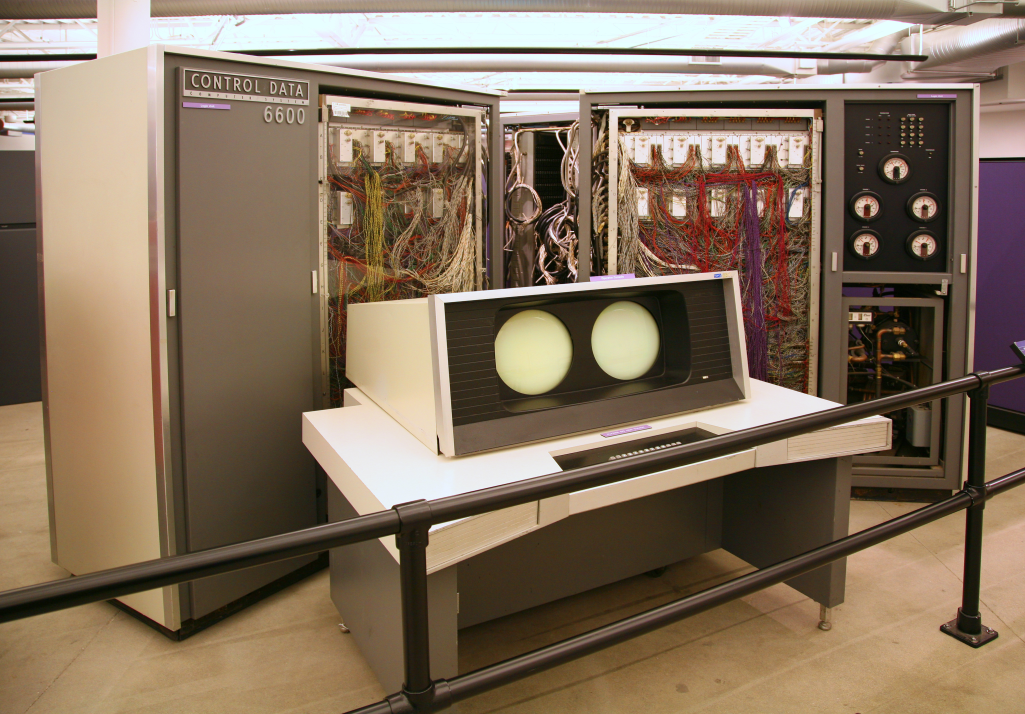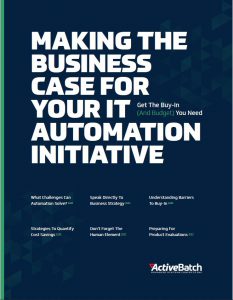Batch Control Continues Through All Stages of Data Processing Related to the Business Process
What is Batch Processing?
Batch processing is a method of scheduling groups of jobs (batches) to be processed at the same time with human intervention. Traditionally, batch workloads have been processed during batch windows, which are periods of time when overall CPU usage is low (typically overnight). The reason for this is two-fold:
- Batch workloads can require high CPUs, occupying resources that are needed for other operational processes during the business day
- Batch workloads are typically used to process transactions and to produce reports, for example, gathering all sales records that were created over the course of the business day
Today, batch processing is done through job schedulers, batch processing systems, workload automation solutions, and applications native to operating systems. The batch processing tool receives the input data, accounts for system requirements, and coordinates scheduling for high-volume processing. Batch processing differs from stream processing in that batch processing requires non-continuous information.
A History of Batch Processing
Batch processing is rooted in the pre-history of computers. As far back as 1890, the United States Census Bureau used an electromechanical tabulator to record information from the US census. Herman Hollerith, who invented the Tabulator, went on to found the company that in turn became IBM.

By the middle of the 20th century, batch jobs were being run using data punched on cards. In the 1960s, with the development of multiprogramming, computer systems began to run multiple batch jobs at the same time to process data from magnetic tape instead of punch cards.
As mainframes evolved and became more powerful, more batch jobs were being run and so applications were developed to make sure that batch jobs only ran when there were sufficient resources, in order to prevent delays. This helped give rise to modern batch processing systems.
Examples of Batch Processing
Batch processing use cases can be found in banks, hospitals, accounting, and any other environment where a large set of data needs to be processed. For example, report generations run after the close of business, when all credit card transactions have been finalized. Utility companies collect data on customer usage and run batch processes to determine billing.
In another use case, a financial data management company runs overnight batch processes that provide financial reports directly to the banks and financial institutions they serve.
Advantages and Disadvantages of Batch Processing
Batch processing is useful because it provides a method of processing large amounts of data without occupying key computing resources. If a healthcare provider needs to update billing records, it might be best to run an overnight batch, when demands on resources will be low.
Similarly, batch processing helps reduce downtime by executing jobs when computing resources are available.
Batch processing tools, however, are often limited in scope and capability. Custom scripts are often required to integrate the batch system with new sources of data, which can pose cybersecurity concerns where sensitive data is included. Traditional batch systems can also be ill-equipped to handle processes that require real-time data, for example stream processing or transaction processing.

Get The Buy-In And Budget You Need For Your IT Automation Initiative
Read five strategies that will help you build a business case for your IT automation goals.
Modern Batch Processing Systems
Modern batch processing systems provide a range of capabilities that make it easier for teams to manage large volumes of data. This can include event-based automation, constraints, and real-time monitoring. These modern capabilities help ensure that batches only execute when all necessary data is available, reducing delays and errors.
In order to further reduce delays, modern batch processing systems include load balancing algorithms to make sure batch jobs are not sent to servers with low memory or insufficient CPUs available.
Meanwhile, advanced date/time scheduling capabilities make it possible to schedule batches while accounting for custom holidays, fiscal calendars, multiple time zones, and much more.
However, because of the growing need for real-time data and the increasing complexity of modern data processing, many IT organizations are opting for workloadautomation and orchestration platforms that provide advanced tools for managing dependencies across disparate platforms.
Batch Processing Takes to the Cloud
The modern IT department is diverse, distributed, and dynamic. Instead of relying on homogeneous mainframes and on-premises data centers, batch processes are being run across hybrid environments. There's a good reason for this.
As mentioned earlier, batch processes are frequently resource-intensive. Today, with the growth of big data and online transactions, batch workloads can require quite a lot. Leveraging cloud infrastructure gives IT the ability to provision compute resources based on demand, instead of having to install physical servers that would, for a good chunk of the day, likely be idle.
The amount of data IT has to manage to meet business needs continues to grow, and batch workload tools are evolving to meet these needs. For example, IT doesn't have the resources needed to manually execute each ETL process, or to manually configure, provision, and deprovision VMs. Instead, batch workload tools are being used to automate and orchestrate these tasks into end-to-end processes.
For example, an automation and orchestration tool can be used to move data in and out of various components of a Hadoop cluster as part of an end-to-end process that includes provisioning VMs, running ETL jobs into a BI platform, and then delivering those reports via email.
As organizations become more dependent on cloud-based resources and applications, the ability to orchestrate job scheduling and batch workloads across disparate platforms will become critical.
Batch Workload Orchestration
Automation and orchestration tools are increasingly extensible, with several workload automation solutions already providing universal connectors and low-code REST API adapters that make it possible to integrate virtually any tool or technology without scripting.
This is important, because instead of having job schedulers, automation tools, and batch processes running in silos, IT can use a workload orchestration tool to centrally manage, monitor, and troubleshoot all batch jobs.
IT orchestration tools can, for example, automatically generate and store log files for each batch instance, enabling IT to quickly identify root causes when issues arise. Real-time monitoring and alerting make it possible for IT to respond to or prevent delays, failures, and incomplete runs, accelerating response times when issues do occur.
Automatic restarts and auto-remediation workflows are also increasingly common, while batch jobs can be prioritized to ensure that resources are available at runtime.
Additionally, extensible batch workload tools make it possible to consolidate legacy scripts and batch applications, enabling IT to simplify and reduce operational costs.
Future of Batch Processing
Traditional batch scheduling tools have given way to high-performance automation and orchestration platforms that provide the extensibility needed to manage change. They enable IT to operate across hybrid and multi-cloud environments and can drastically reduce the need for human intervention.
Machine-learning algorithms are being used to intelligently allocate VMs to batch workloads to reduce slack time and idle resources. This is critical for teams managing high-volume workload runs or with large numbers of virtual or cloud-based servers.
With machine learning running in real-time, additional resources can be reserved if an SLA-critical workload is at risk of an overrun. This includes provisioning additional virtual or cloud-based machines based on dynamic demand. Coupled with auto-remediation, this provides a powerful tool to make sure that service delivery isn't delayed to the end-user or external customer.
In the long-run, IT is becoming more diverse and distributed, and the types of workloads IT is responsible for will continue to expand. The maturation of new technologies -artificial intelligence, IoT, edge computing- will place new pressures on IT teams to quickly integrate new applications and technologies.
IT is rapidly changing, but some things, such as batch processing, stay the same.
Frequently Asked Questions
What is meant by batch processing?
Batch processing refers to compute jobs executed together in a batch. These batches of jobs are often scheduled to execute in overnight batch windows when demands on an organization's compute resources are otherwise typically low. Batch processing differs from other types of processing such as stream processing and transaction processing, in that batches are scheduled to run without human interaction.
See how ActiveBatch can simplify your batch processing.
What are the advantages of batch processing?
Batch processing is typically used to process large, routine transactions that can be scheduled to run at regular date or time intervals. This frees up infrastructure resources during peak times, often during the day, as many batch processes can be scheduled to run in overnight batch windows. Batch processing can be highly reliable, ensuring batches complete on time and without manual intervention.
See how ActiveBatch can simplify your batch processing.
Is ActiveBatch designed for batch processing?
Yes, ActiveBatch is a workload automation and enterprise job scheduling solution that easily handles high-volume, resource-intensive batch processes. Batch jobs can be scheduled using granular date/time options with constraints to help ensure jobs complete successfully.
See how ActiveBatch simplifies cross-platform batch scheduling.
Ready To See How We Make Workload Automation Easy?
Schedule a demo to watch our experts run jobs that match your use cases in ActiveBatch. Get your questions answered and learn how easy it is to build and maintain your jobs in ActiveBatch
Source: https://www.advsyscon.com/blog/batch-processing-system/
Post a Comment for "Batch Control Continues Through All Stages of Data Processing Related to the Business Process"